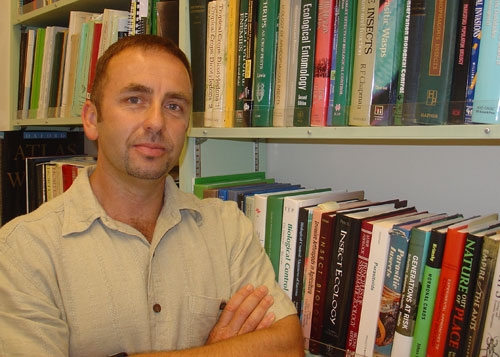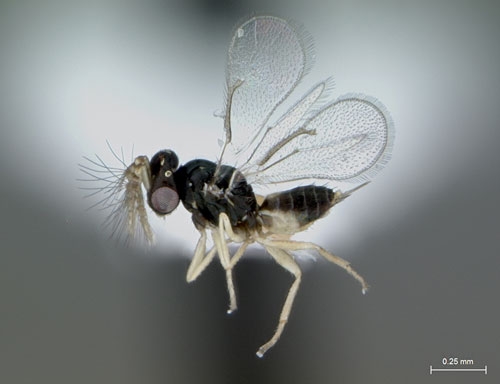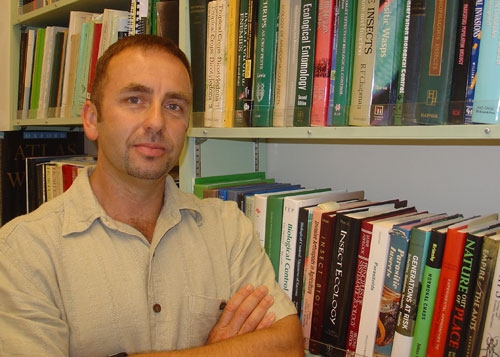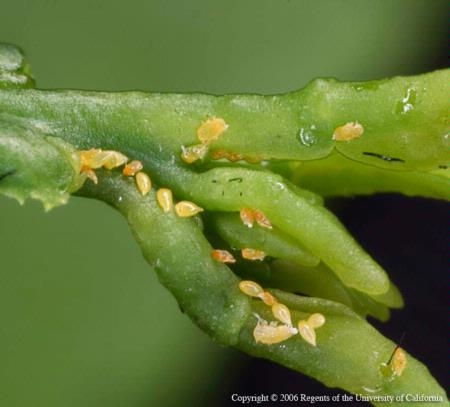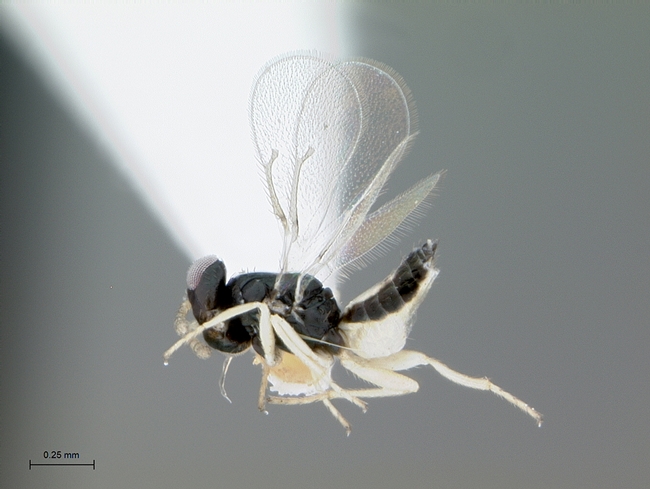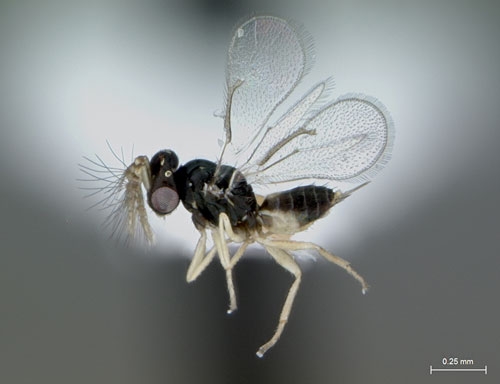Posts Tagged: tamarixia radiata
California Report features UCCE biocontrol scientist
The public radio daily magazine program The California Report this morning featured a three-minute interview with UC Cooperative Extension biological control specialist Mark Hoddle. The interview-format story comes a day before the release of Asian citrus psyllid natural enemy Tamarixia radiata in Los Angeles County neighborhoods. Hoddle and his wife Christina Hoddle, an assistant specialist in entomology, had collected colonies of the parasitoid in the Punjab region of Pakistan.
Reporter Rachael Myrow told listeners the release of natural enemies on Friday is the first major release in a major urban area, and then allowed Hoddle to explain the developments and their implications.
For more on Tamarixia radiata, see the UC ANR press release.
Myrow also posted a story on newsfix, KQED's Bay Area news blog.
News media pick up on release of Tamarixia radiata
The first release this week in Riverside of Tamarixia radiata, a tiny wasp from the Punjab that is a natural enemy of Asian citrus psyllid, was picked by several news outlets, including the Riverside Press-Enterprise, the Porterville Recorder and the Desert Sun.
“It’s great to release these guys at long last,” the Enterprise quoted Mark Hoddle, a biological control specialist in UCR’s entomology department who for the past two years has been collecting the wasps in Pakistan.
The Recorder included a quote from Ted Batkin, president of the Citrus Research Board, a grower organization that helped fund Hoddle's research.
“This is the very first step of multiple steps in research to see if this particular strain of Tamarixia will adapt to California,” Batkin said. He said the wasp is just one of 10 or 12 tactics being studied to combat the psyllid.
The Desert Sun article had words from Aviva Goldman, a UC Riverside graduate student who works with Hoddle.
“The Asian citrus psyllid is the most potentially damaging invasive pest in California right now,” Goldman said. “These wasps are a way to treat the infestation without having to go to every person's backyard and spray pesticides on each tree."
More information about the release of Tamarixia radiata in Riverside can be found in the ANR news release.
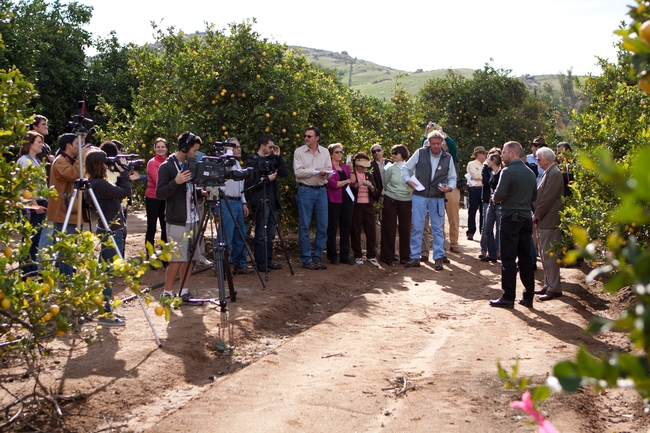
Mark Hoddle (second from right), the director of the Center for Invasive Species Research, answers questions from the audience. (Photo: Mike Lewis)
UC scientists release a natural enemy of Asian citrus psyllid
Tamarixia radiata – tiny, stingless parasitic wasps that lay eggs in Asian citrus psyllid nymphs – were released in a citrus grove behind the residence of UC Riverside Chancellor Tim White. Over the next several years, UC Riverside and California Department of Food and Agriculture scientists will raise thousands of Tamarixia for release throughout California. The Tamarixia larvae will eat the ACP nymphs, killing them, and emerge as adults about 12 days later. Adult female Tamarixia also eat other ACP nymphs, killing many this way as well.
On Dec. 7, 2011, state and federal authorities cleared Tamarixia from quarantine with the issuance of a permit to release this natural enemy for establishment in California. The parasitic wasps can’t bite or sting people or animals. Safety testing in quarantine has demonstrated that the parasites are disease free and pose no environmental risk.
The Indian subcontinent is likely part of the native range for Asian citrus psyllid, Hoddle said. The first study of the pest was published in 1927 by scientists in the region. Asian citrus psyllid is now found in parts of the Middle East, South and Central America, Mexico and the Caribbean. In the United States, this psyllid was first detected in Florida in 1998 and is now also found in Louisiana, Georgia, South Carolina, Texas and Arizona. In 2008, the pest was detected for the first time in California in San Diego and Imperial county backyard trees. Large populations of Asian citrus psyllid are now well established in urban areas of Los Angeles, San Bernardino and Riverside counties.
When Asian citrus psyllids feed on citrus leaves and stems, they damage the tree by injecting a toxin that causes leaves to twist and die. More important, however, is the psyllid’s ability to spread a bacterium that causes Huanglongbing disease. Huanglongbing, also known as citrus greening, is one of the most harmful diseases of citrus worldwide. The leaves on infected trees turn yellow, the fruit becomes bitter and eventually the tree dies. There is no known cure for citrus, and this plant disease is not a risk to people.
Huanglongbing has made its way to Mexico and Florida, but so far it has not been detected in California. Currently, the citrus industry is dependent on insecticide sprays to control ACP and prevent the introduction of Huanglongbing. UC Cooperative Extension citrus entomology specialist Beth Grafton-Cardwell, director of the UC Lindcove Research and Extension Center, welcomes the promise of biological control with introduced natural enemies.
“This is very good news for the integrated management of Asian citrus psyllid and a highly significant contribution of the University of California,” Grafton-Cardwell said. “Parasitoid releases will add a new and exciting component to the management program for ACP, especially for the many homeowners who have citrus trees in their yards.”
Hoddle said Tamarixia won’t eradicate Asian citrus psyllid, but scientists predict it will reduce the densities of the pest, giving other control practices a better chance of working. Commercial citrus producers in California will still need to apply insecticides to control Asian citrus psyllid and prevent the spread of Huanglongbing, should it be found in the state. However, the frequency of these applications may be reduced because Tamarixia is killing ACP nymphs in areas that are not sprayed.
Hoddle collected the parasites in collaboration with scientists in the Department of Agri-Entomology at the University of Agriculture in Faisalabad (UAF), Pakistan. UAF was an ideal base for the project, Hoddle said, because it had citrus research plots infested with Asian citrus psyllid that have not been treated with insecticides. The university is also situated near local commercial citrus production, the area has a climate similar to citrus-growing regions of California, and the university’s vice chancellor, Iqrar Khan, is a UC Riverside graduate who also has an active research program on Huanglongbing in Pakistan.
In March and April 2011, Hoddle spent four weeks at UAF to set up research plots in kinnow and sweet orange trees. Coincidentally, kinnow is a mandarin that was bred at UC Riverside in 1935 and accounts for 85 percent of citrus produced in the Punjab. Hoddle and his Pakistani colleagues collected 24 male and 56 female Tamarixia radiata, which were brought back to UC Riverside to establish colonies.
Hoddle returned from a June 2011 trip to Pakistan with 151 male and 255 female Tamarixia radiata. An October and November 2011 visit netted another 800 parasitic wasps.
“Gathering insects from citrus plants in the Punjab generated an immense amount of curiosity,” Hoddle said. “Kids in particular were super-curious about what we were doing, where we had come from and why we had come to Pakistan. The people in the Punjab were incredibly courteous, polite and generous.”
Hoddle has trained a Pakistani graduate student Shouket Zaman Khan at UAF to monitor the interaction of Asian citrus psyllid with its natural enemies in their native environment. The researchers will determine whether other natural enemies of the pest could provide additional biological control of California ACP in the future.
Funding for the Asian citrus psyllid biocontrol effort has been provided by the California Department of Agriculture Food and Agriculture Specialty Crops Program, the USDA Citrus Health Response Program, the Citrus Research Board, and the UC Hansen Trust.
| Click here for high resolution. | Click here for high resolution. |
MEDIA CONTACT: Mark Hoddle, UC Cooperative Extension biological control specialist based at UC Riverside, (951) 827-4714, mark.hoddle@ucr.edu

